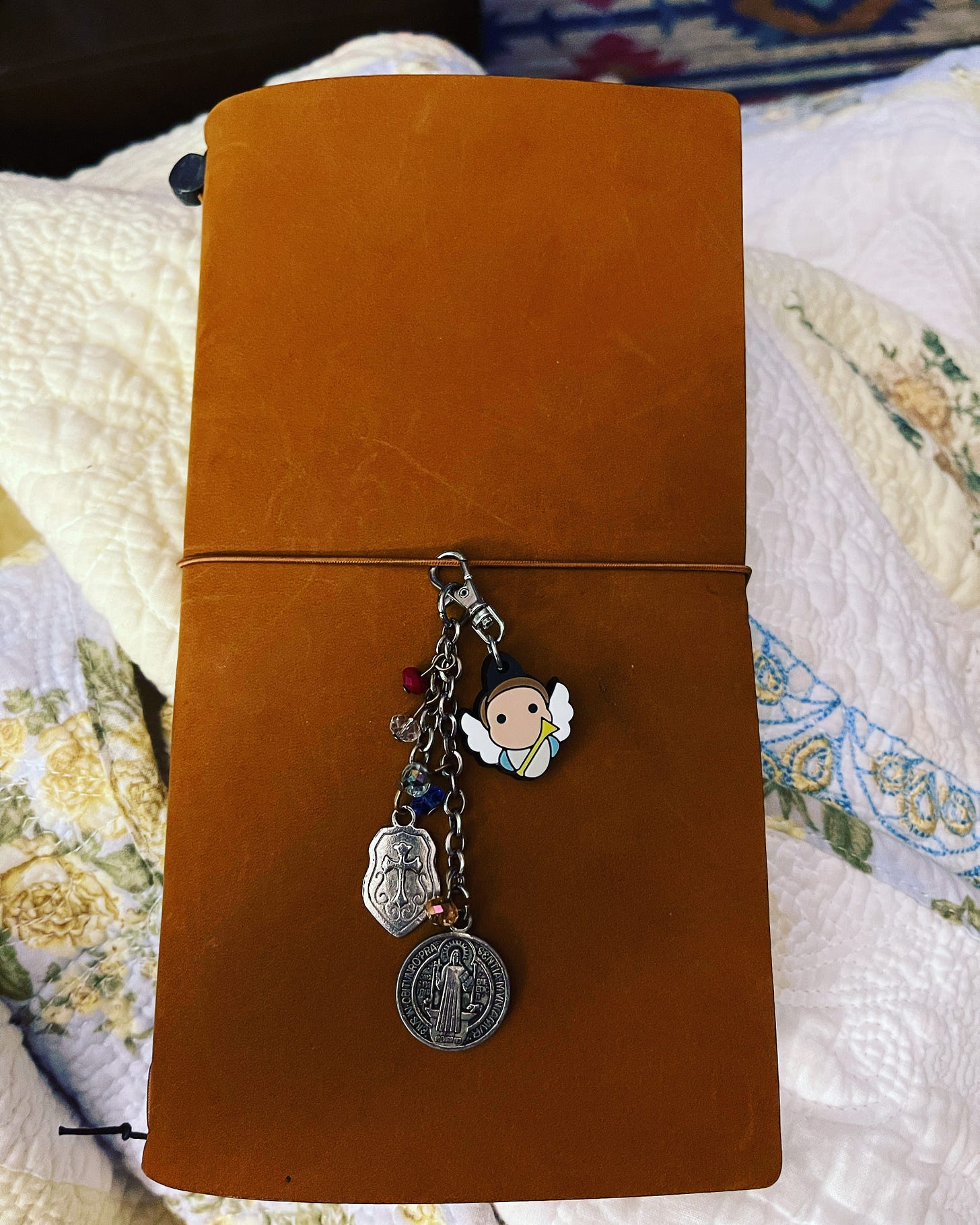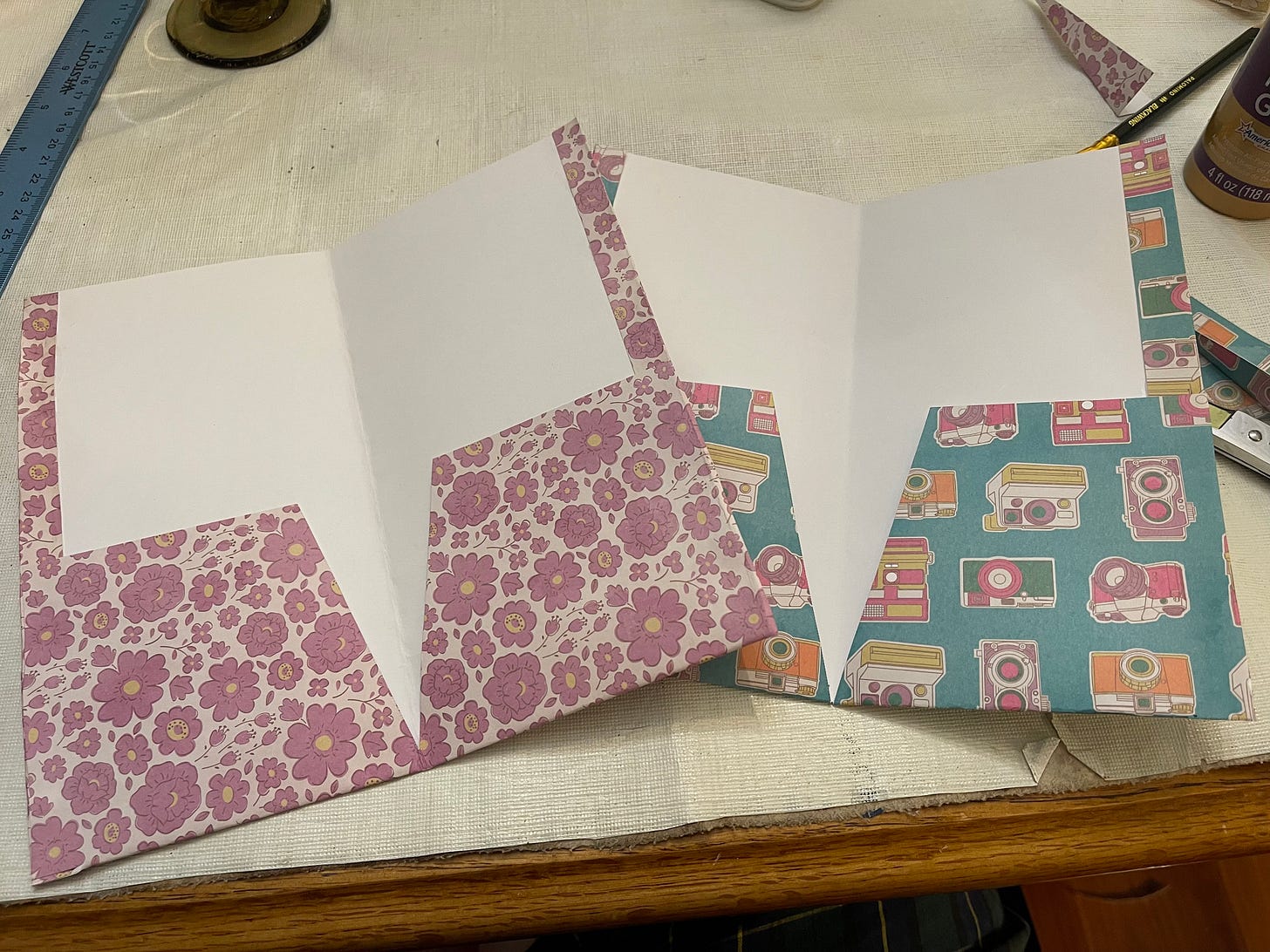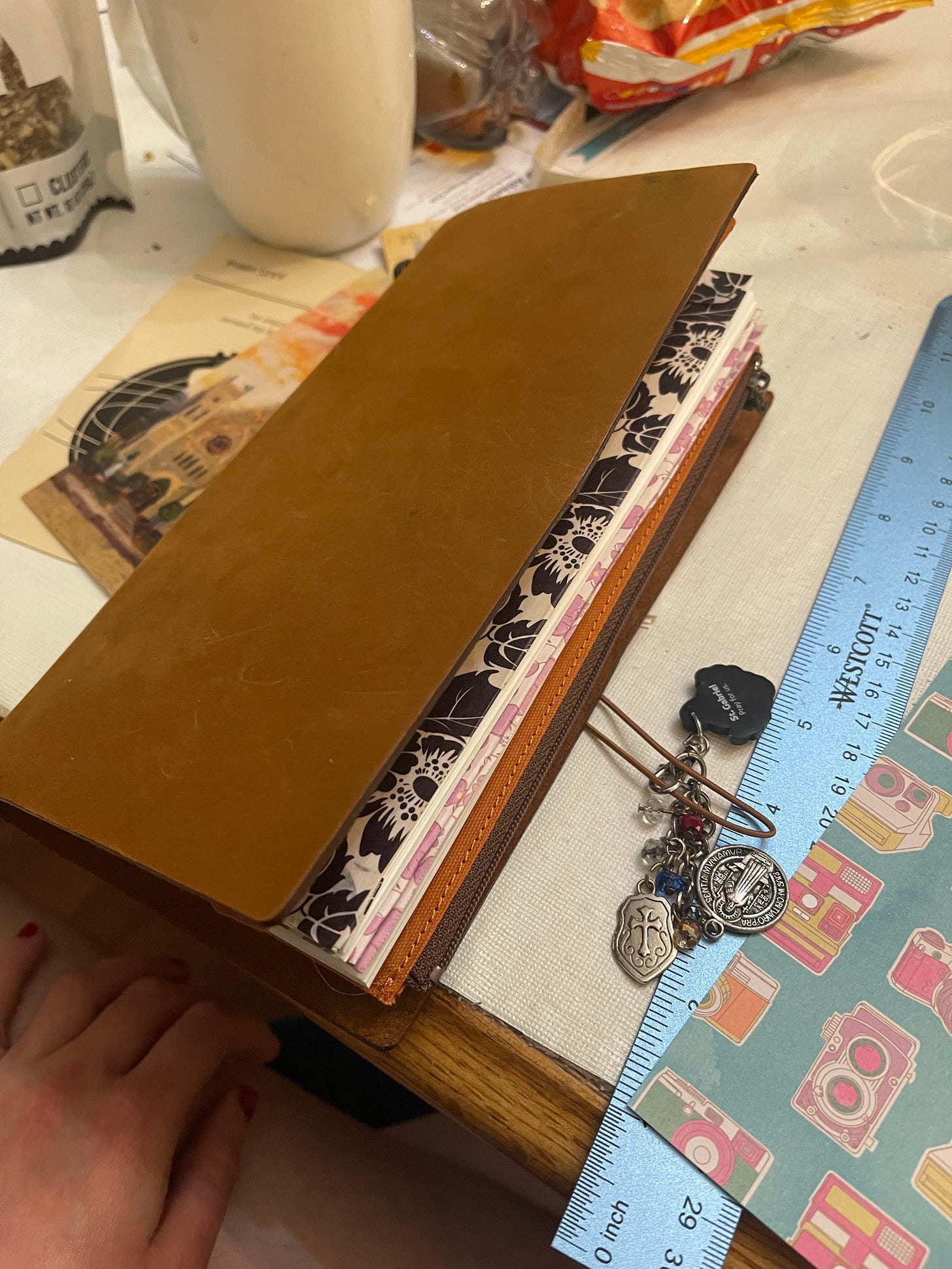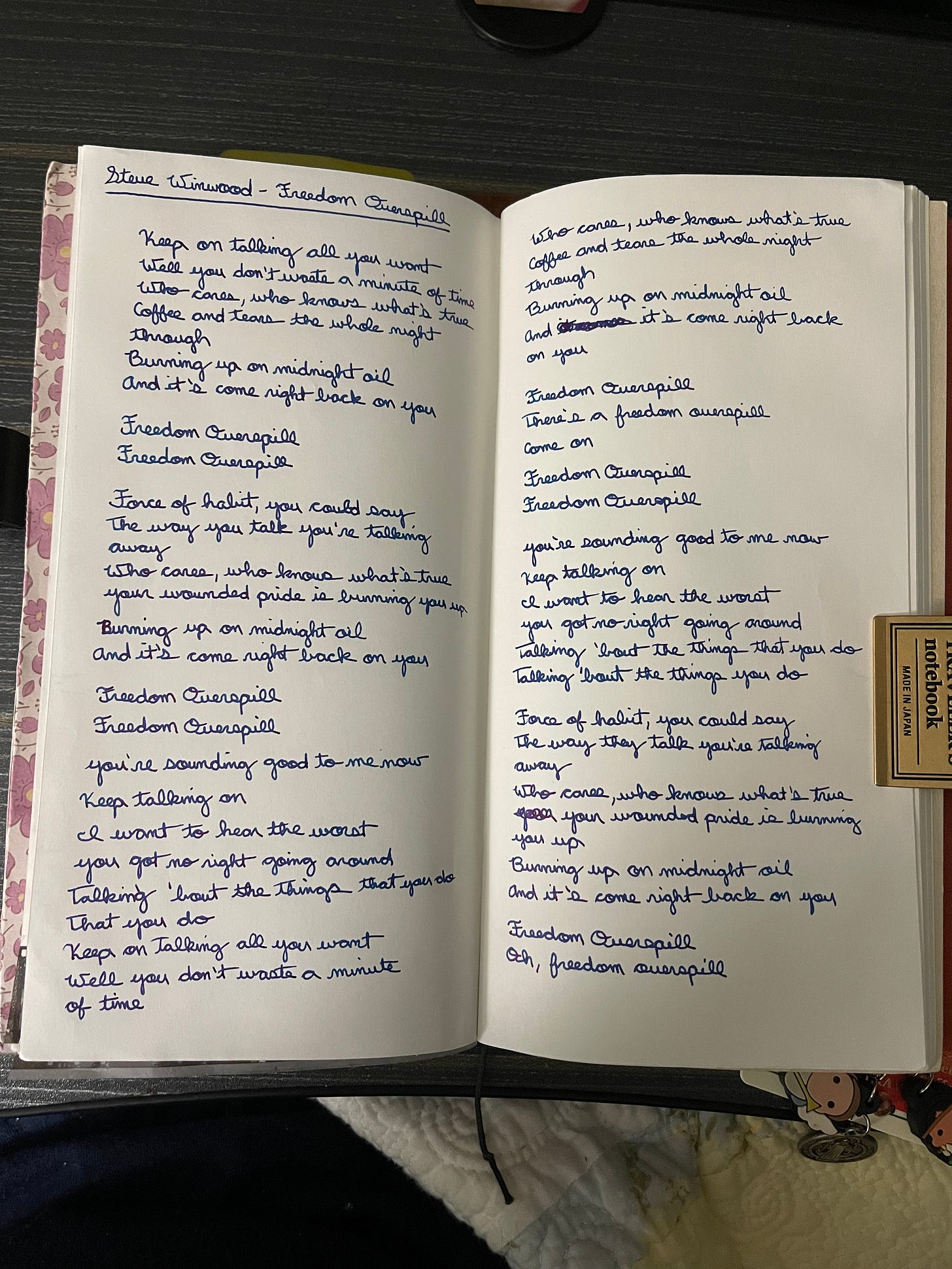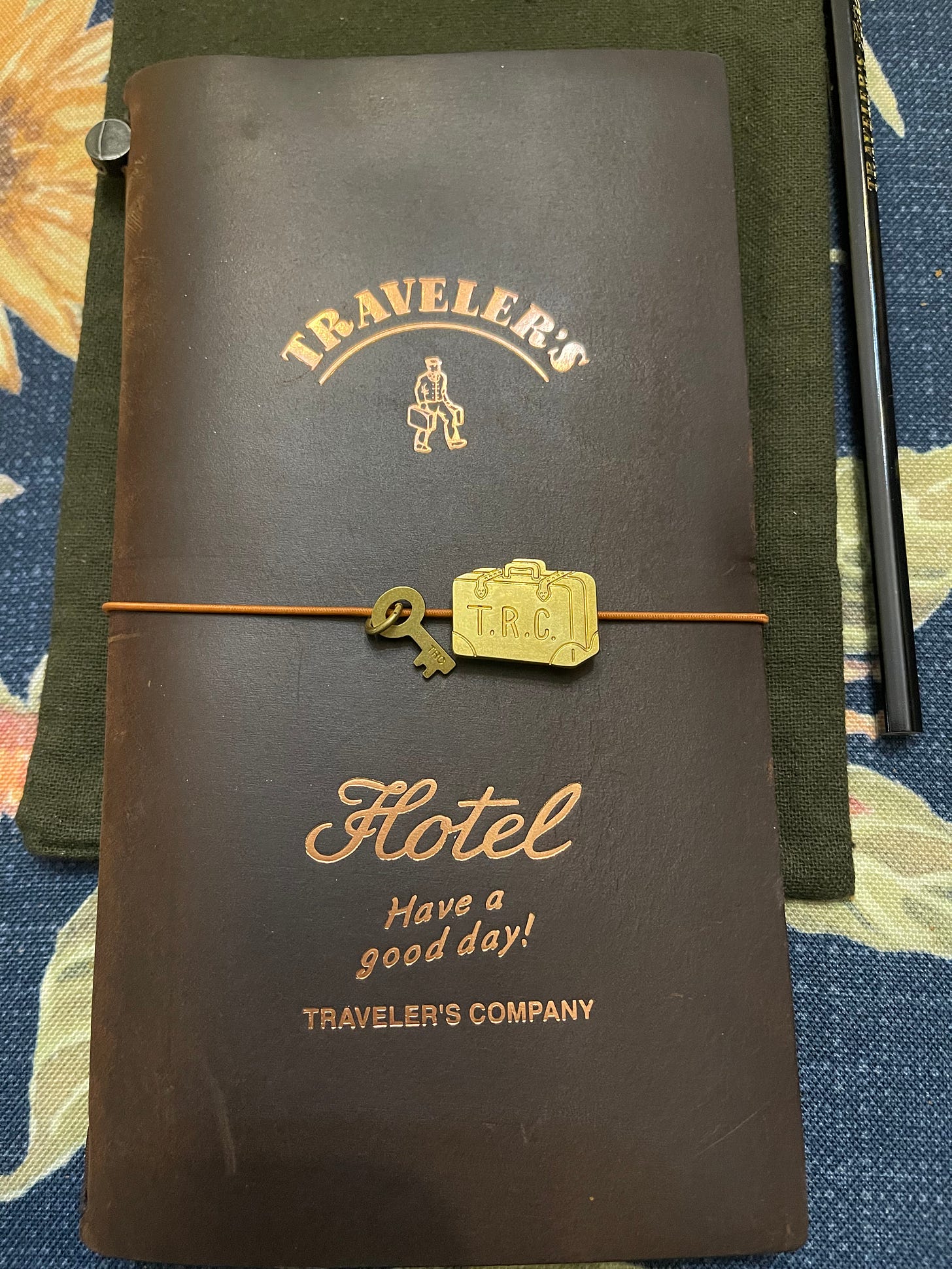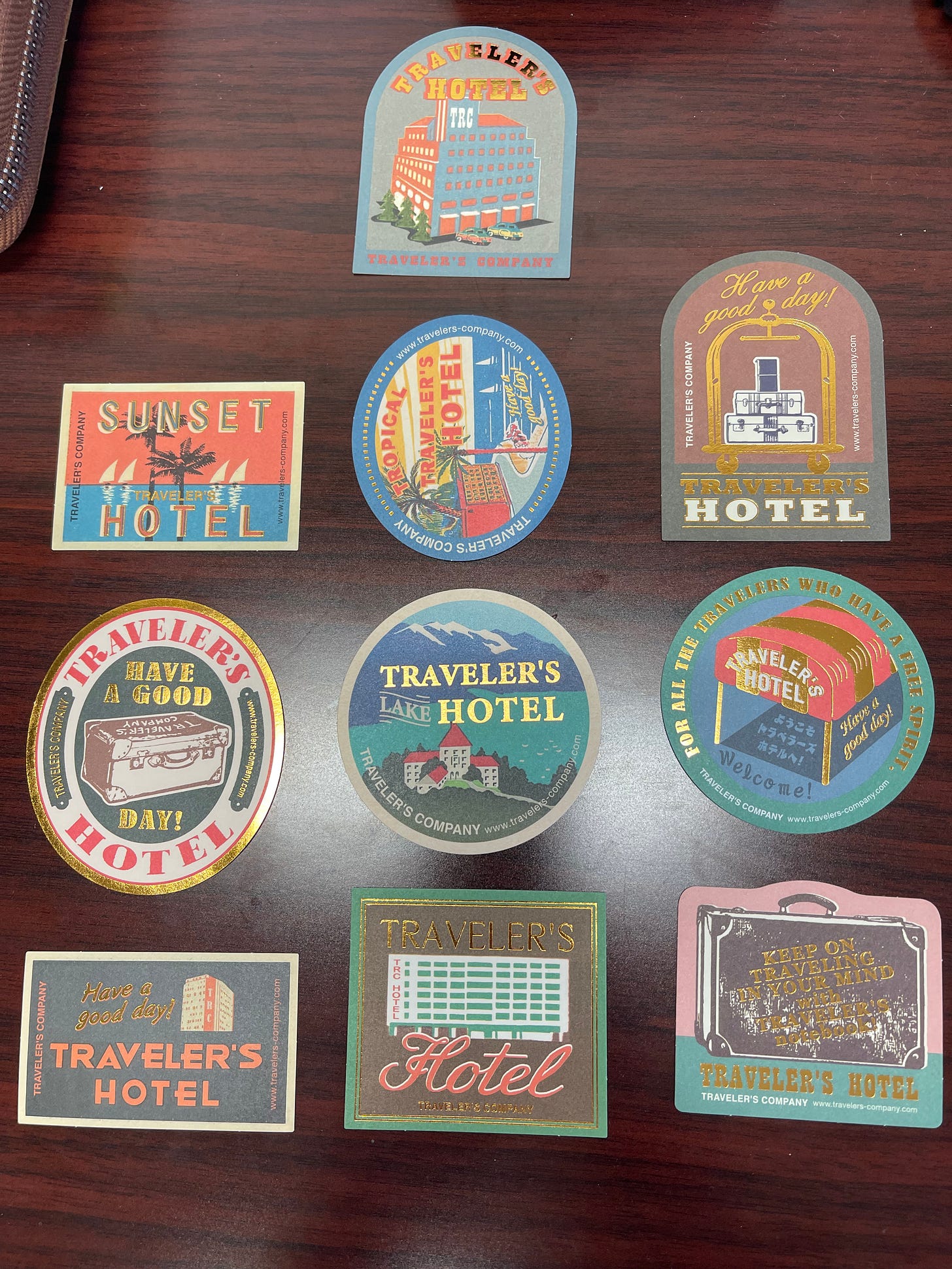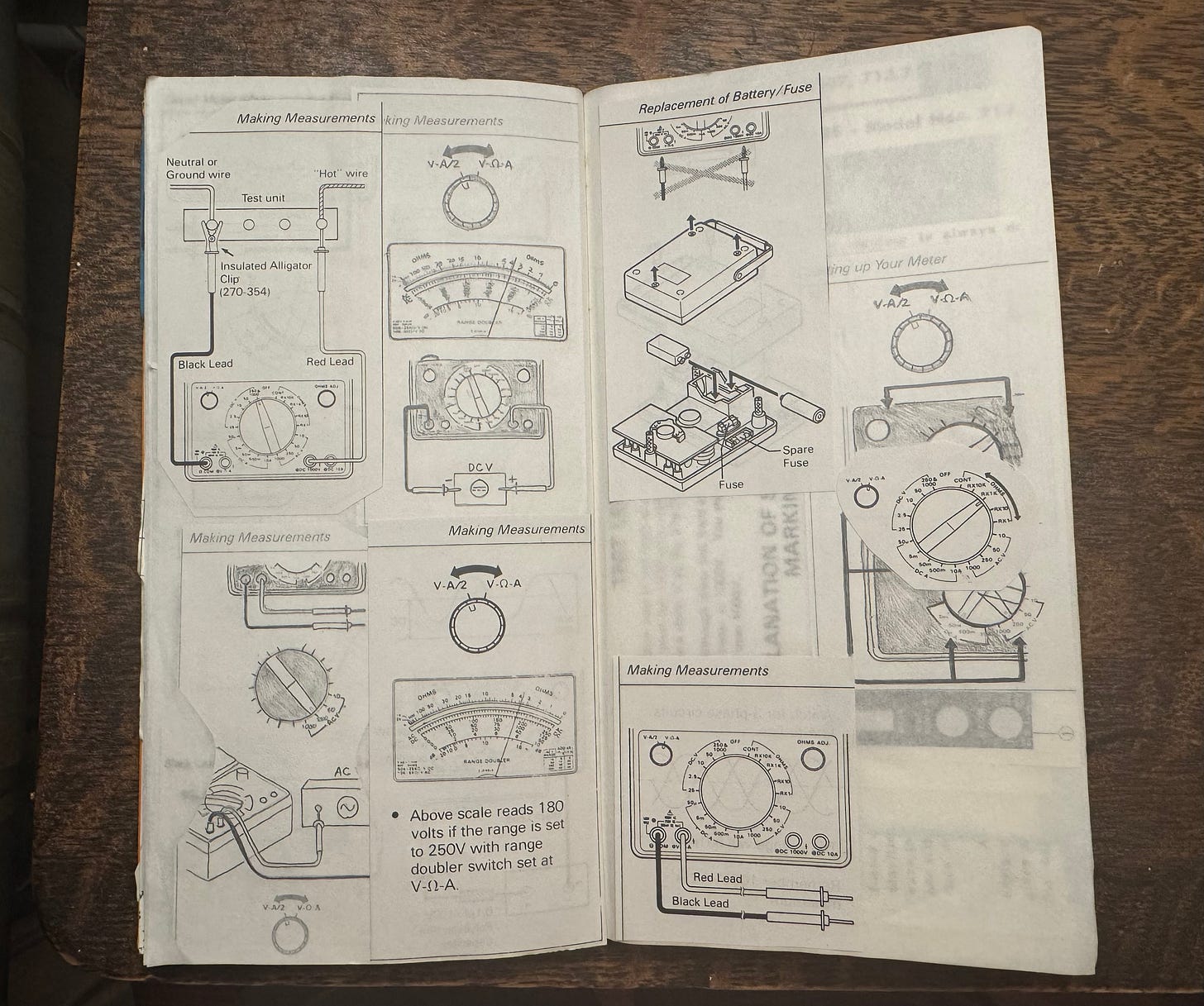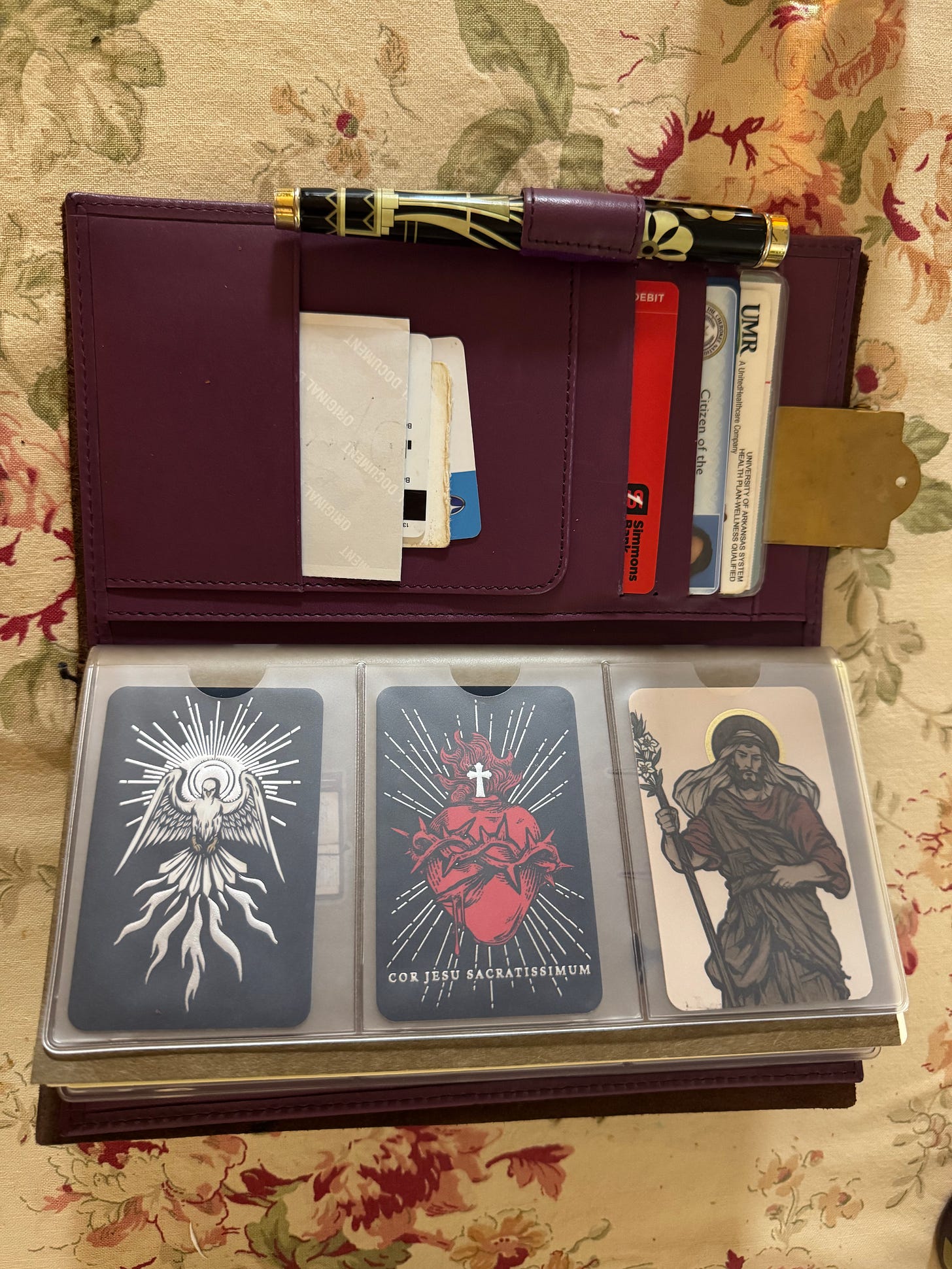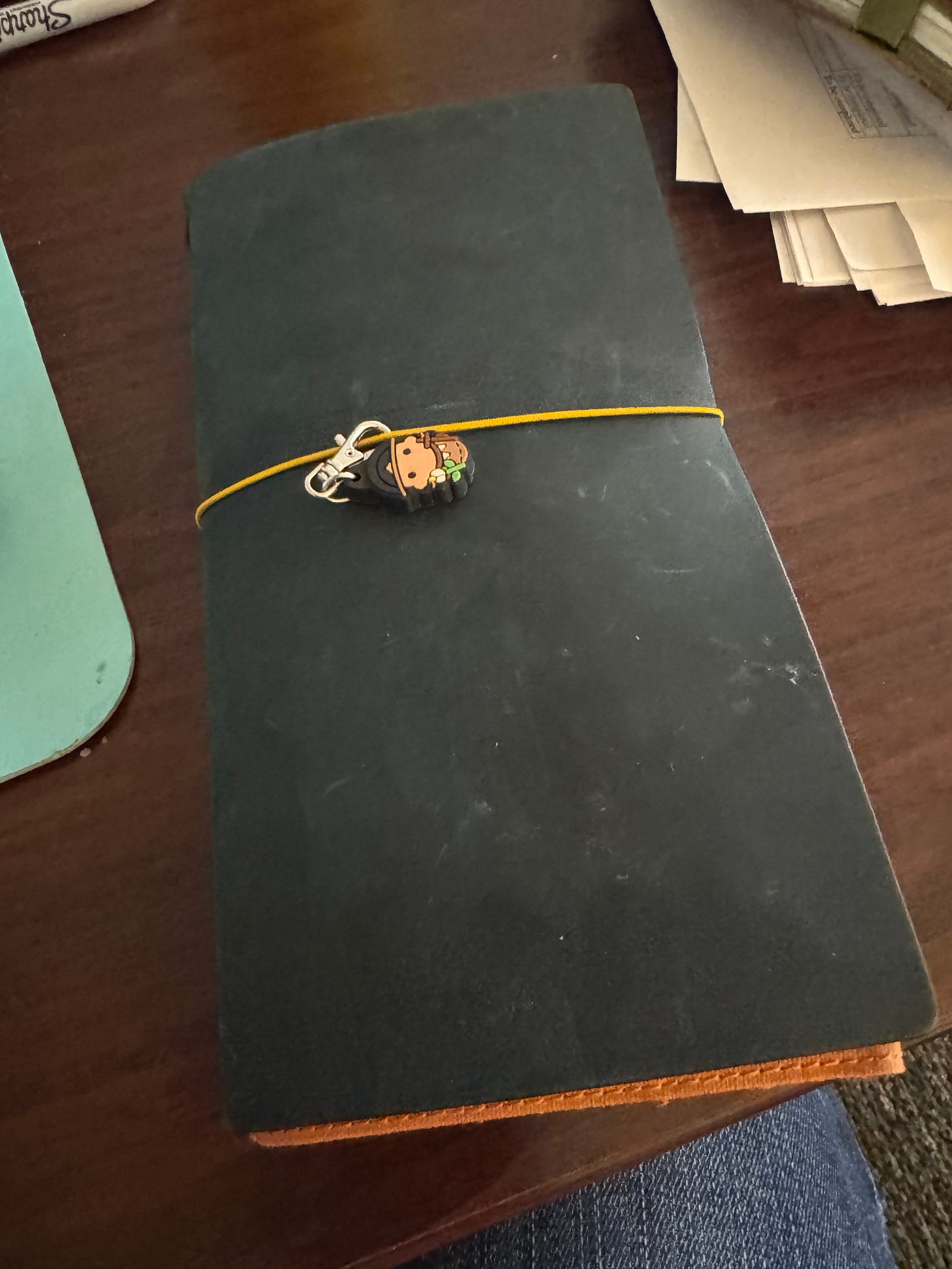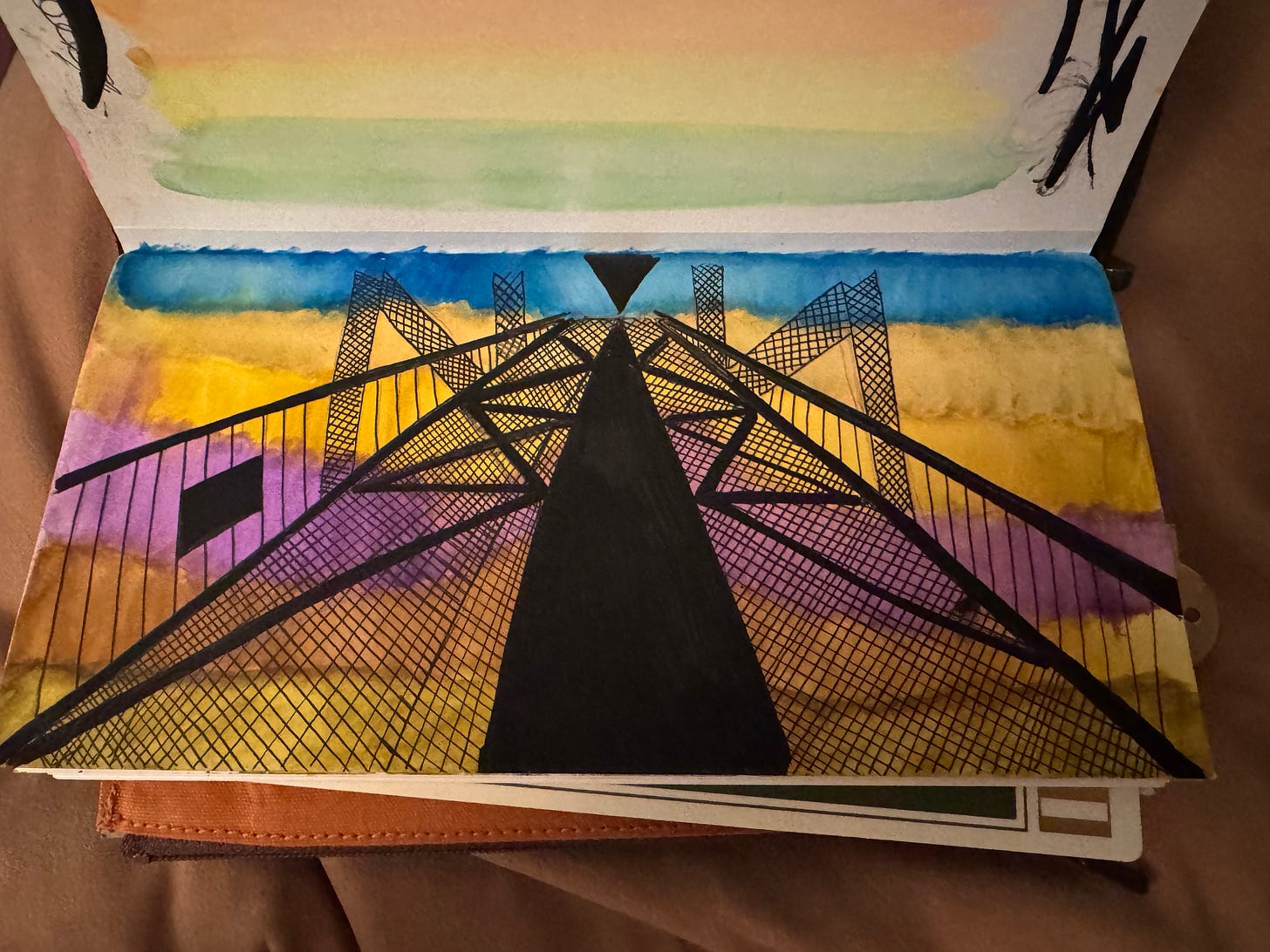Part 1: Traveler's Notebook System
Reflecting on my journey with the Midori Traveler's Notebook
To start off this personal operating system series, I want to give an overview of the Traveler’s Notebook system, a simple leather cover with strings that allow you to insert multiple slim notebooks. Many companies have their own version of this system. The “official” Traveler’s Notebook system was created by the Japanese company Midori in 2006. This system gained popularity fast in the stationery world due to its sleek and open-ended customizability. It takes time to get used to if you are used to traditional square notebooks. The full-size version is a more rectangular A5-slim size. Midori designed these covers in the Japanese wabi-sabi design philosophy, which focuses on simplicity, nature, imperfection, and impermanence.
Ninety percent of my journaling happens through notebook covers now. As much as I love the traditional hardbound notebook, I love the ability to customize a full system to my own. It also comes with the added benefit of making my own notebooks. It makes it a little cheaper in the long run (if you don’t continue buying covers…).
The main con to this, however, is that you have to try find a reason to use multiple slim notebooks at the same time if you want to commit to something like this. But that’s part of the fun of the system. It’s also easy to get overwhelmed. To me, it’s a mixture of both. But over the years, I’ve experimented with different notebook ideas enough to know what I’ll use and won’t use.
Even though I love the idea of these notebook covers, it took me a while to get comfortable with the slim format. When I first acquired a full-size Traveler’s Notebook, I mostly used it as a junk journal and commonplace book for song lyrics and quotes. It was easy to travel with and jot down lyrics to songs that spoke to me at specific times. I eventually learned how to make my own pocket folders using card stock. This allowed me to store various items such as prayer cards in my Traveler’s Notebook system. This is when it started to click: I could customize this system in a way that reflects my personality in more ways than a simple notebook could. I enjoyed the idea of physically containing objects that are important to me in a way that I haven’t experienced in a long time due to digital curation and storage via computers and smartphones. It was like a neatly organized binder on the first day of school.
Even though it was slowly clicking, I was still reticent to journal in this system due to its size. I think a lot of the problem had to do with the type of paper I was using. I mostly used the blank paper inserts, which were great for junk journaling and random lyrics, but a bit uncontrollable for my writing.
Later on I moved to the limited edition Hotel series. As a long lover of hotels, I felt drawn to the design style and retro stickers. I’m glad I got it when I did, because they now sell for ridiculous amounts of money on eBay.
For a long time I used this cover to junk journal with my granddad’s old user manuals. I now use this cover as my main wallet, complete with a wallet insert, card holder that I use for holy cards, and graph paper insert for journaling. The graph paper insert helped me feel comfortable with the slim rectangular format.
Why I Journal by Hand
I use a journal insert because it helps my brain slow down and focus on what I need to think deeply about. Typing doesn’t allow my thoughts to flow to deeper places as writing by hand does. They skim the surface to quickly arrive to their destination. I use a keyboard to bang out emails as swiftly and concise as possible. It’s a good tool, but not the best route to discover the intricacies of myself as a human being. Not everyone feels this way, of course, but it’s a good practice for me to switch contexts and slow down. I don’t want to rapidly bang out my thoughts in the same way I bang out an email or text message.
Watercoloring
Recently I found a blue Traveler’s Notebook that I use for watercoloring. I wanted to get back to traditional sketching and painting, and this was an easy system to bring along.I also bring a watercolor pen and small pan of paints in a kit.
Encountering the Real World
In the Traveler’s Notebook system, mixing my wallet and journal together provides a compact solution for my essentials. It’s a good way for me to compartmentalize my life in a way that doesn’t require the use of a screen. I want to ensure I don’t fall into the trap of only living life digitally or not at all. But I also want to ensure I don’t over consume the physical objects that lure me in life. As with everything, I must maintain a delicate balance.
Lately it seems like a tide is shifting for us who are fatigued by social media and the internet in general. With the rise of AI slop, never-ending social media discourse, the internet feels synthetic now. This synthetic world accelerated during the COVID-19 pandemic and has only increased with AI. Facebook feels distorted. YouTube feels shallow (although it’s been great for long-form podcasts recently). And Instagram is overstimulating with content and pressure to buy. I avoid TikTok because I don’t like its addicting nature. Notebook systems like Traveler’s keep me away from this synthetic space. It puts me in my own little space that I can partially control.



